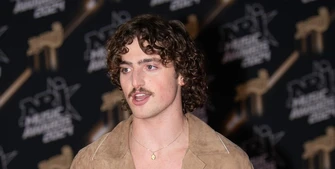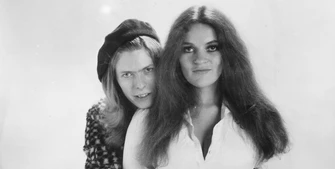Violinist Cho-Liang Lin's gradual expansion into festival leadership
Violinist Cho-Liang Lin’s evolution from soloist to festival leader reveals how performers can shape classical music’s future through bold programming and global vision.

The curtain rises. A packed auditorium stills. Behind this magical moment lies an intricate web of artistic decisions rarely visible to audiences. Festival directors shape classical music's future through programming choices, commissioning initiatives, and organizational vision—their decisions have rippled through musical culture for decades.
While audiences applaud soloists, the architectural minds behind music festivals quietly transform entire musical ecosystems. This examination delves into the remarkable metamorphosis from virtuoso performer to cultural architect, using violinist Cho-Liang Lin's career as our illuminating case study.
From Shattered Toy to Carnegie Hall
Passion destroyed his first instrument. A child in Taiwan played his toy violin until it literally fell apart. "I was given a toy violin, but it quickly wore out because I kept using it. Finally, my father brought home a quarter-sized violin and started giving me my first lessons when I was five," Cho-Liang Lin remembers, recalling those formative days that launched a lifetime of music journey.
This childhood determination fueled an extraordinary performance trajectory. "When I graduated, I took on a very heavy concert load at age 21, giving 100 to 110 concerts a year," Lin recounts. Consider the sheer stamina required—performing 110 times annually with elite orchestras worldwide demands an extraordinary technical command paired with exceptional physical endurance endurance.
Many soloists remain trapped within the endless cycle of concerts, airports, and hotel rooms. Lin expanded into teaching precisely when most virtuosos double down exclusively on solo careers. "In 1991, when I was 31, Juilliard school, my alma mater invited me to go and be faculty," he explains. This educational dimension created powerful feedback loops—his performances informed his teaching while student perspectives continually refreshed his artistic approach. The result transformed a conventional solo career into something far more influential.
Midwife to Fifty-Four Musical Creations
Great festival directors fundamentally reshape musical landscapes through commissioning initiatives. During Cho-Liang Lin's leadership at La Jolla SummerFest, audiences witnessed an unprecedented creative laboratory where entirely new musical worlds emerged.
"During that time, I instigated this commissioning process, and I was very pleased when I was about to leave that festival, I looked at the listing, I had the commission and premiered 54 works during my tenure in La Jolla," Lin notes. These numbers astound even seasoned arts administrators—premiering three completely new compositions annually required substantial financial resources, artistic courage, and organizational commitment.
Cho-Liang Lin speaks of these commissioned works with remarkable tenderness: "You never know whether a piece will endure the test of time, but you have to give the piece a chance. It's like a baby. The piece is there as a baby, but you have to deliver it. I'm the doctor who brings the baby out to the public and show it to them."
Such intimate metaphors illuminate the dual nature of artistic leadership—requiring both profound vulnerability in presenting untested works and unwavering conviction about their value. Each premiere carried significant artistic and financial risks, yet these moments provide essential oxygen for classical music's continued cultural relevance.
Cross-Cultural Musical Engineering
Effective festival directors naturally expand their influence across geographical boundaries. Cho-Liang Lin established two festivals in Taiwan alongside directorial responsibilities in Hong Kong, creating international bridges through musical programming. This transcontinental leadership required adapting artistic philosophies across vastly different cultural environments while maintaining consistent standards.
Deep cultural purpose motivated these international ventures. "Another legacy I hope to achieve is to tell Taiwan, my homeland, that I did my best to promote the musical level and the excellence of culture and music making in my home country. It is unequivocal devotion to Taiwan," Lin reveals. These words demonstrate how festival leadership transcends career achievement, becoming instead a sophisticated form of cultural engagement development.
The violin remained perpetually active throughout these expansions. Unlike administrators who retreat from performance, Lin maintained vibrant concert schedules while simultaneously directing multiple international festivals and fulfilling teaching commitments. This multidimensional presence created dynamic synergies—performance insights enriched programming decisions, teaching informed artistic direction, and international perspective enhanced everything. Such complex artistic identities rarely exist without diminishing one aspect or another.
Musical DNA That Survives Generations
Why do certain festivals permanently alter musical history while others fade into obscurity? The answer often lies in their commissioning initiatives. "One of the legacies I already mentioned, which is the commissioning process for new works to be written that is ongoing, I have not stopped," Cho-Liang Lin explains. Those 54 commissioned compositions now travel through concert halls worldwide, permanently enriching musical literature decades after their initial premieres.
Exceptional festival directors create fertile environments rather than controlling outcomes. They cultivate musical ecosystems where excellence multiplies naturally across generations. Commissioning initiatives ensure artistic fingerprints remain visible in classical music centuries after performance careers conclude.
This generational perspective naturally extends into educational philosophy. "Another legacy is through my students. Hopefully, they gain something from working with me," Cho-Liang Lin reflects. Such interconnected artistic activities—performing, commissioning, teaching, directing—create exponentially greater impact than isolated pursuits. This comprehensive approach maximizes cultural influence across multiple dimensions simultaneously.
Programming Architecture That Builds Audiences
Festival directors fundamentally serve as curators who shape musical understanding. Examination of concert seasons reveals how standard repertoire and contemporary works can coexist within thoughtfully designed programs. Strategic programming creates meaningful contexts where historical compositions and new works mutually illuminate each other.
This balanced approach encourages audiences to discover connections between familiar masterpieces and unfamiliar musical territory. Musical curiosity thrives when listeners feel both comfortable with known works and intrigued by new discoveries. Successful festival directors recognize that audience development requires respecting traditional expectations while encouraging exploration beyond the standard canon.
The Path of Artistic Leadership
Festival leadership represents a natural evolution for performers seeking to shape musical culture broadly. This career path allows musicians to influence artistic communities through thoughtful programming, commissioning new works, and developing educational initiatives.
Successful directors often maintain active performance careers that enrich their administrative work. Cho-Liang Lin demonstrates this integrated approach—his ongoing violin performances inform programming decisions and help maintain artistic standards throughout his organizations.
The transition from soloist to festival director offers a compelling model for musicians interested in expanding their cultural contributions. Cho-Liang Lin's career illustrates how performers can build upon their instrumental expertise to create lasting musical legacies that extend far beyond individual concerts.









